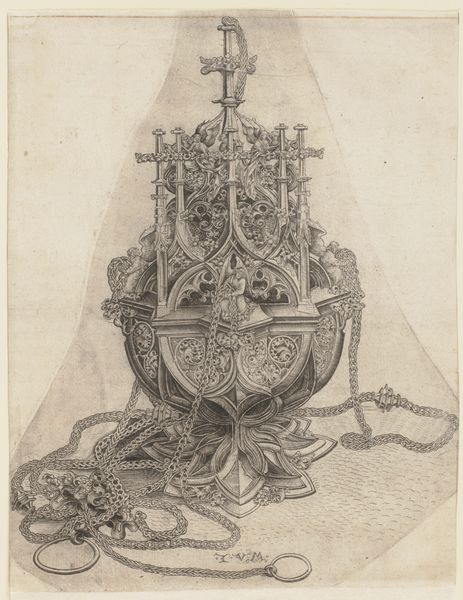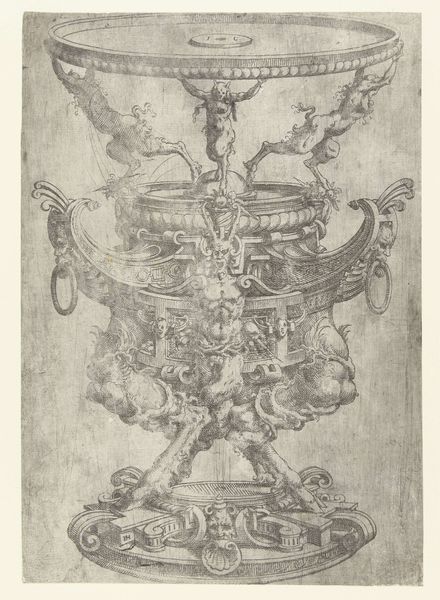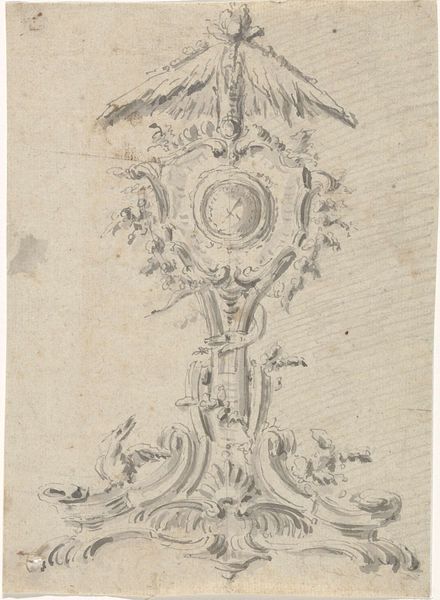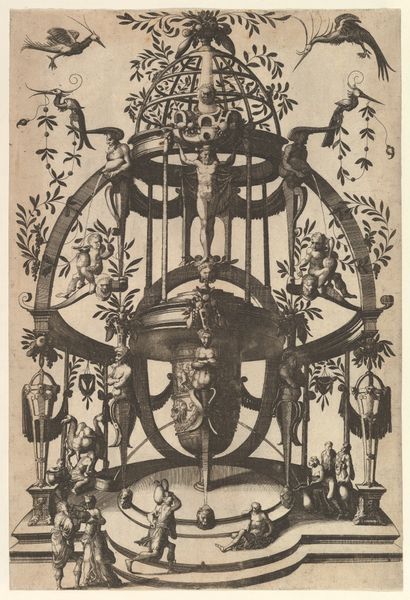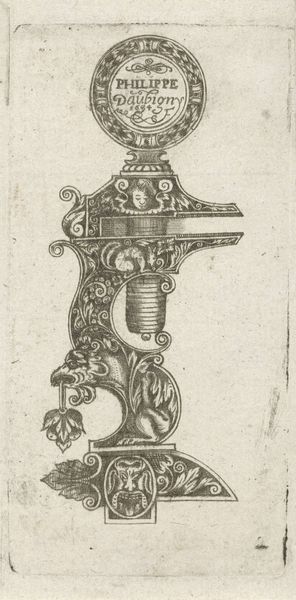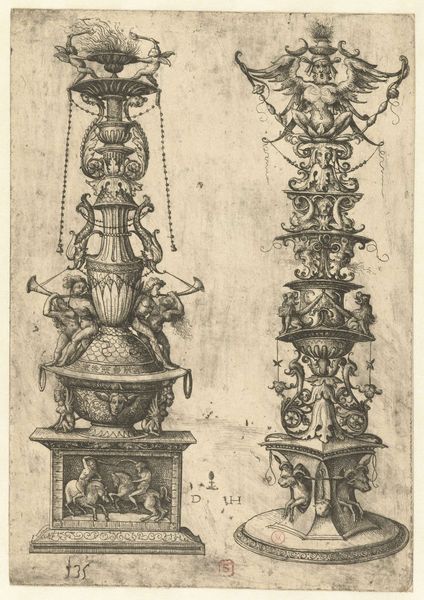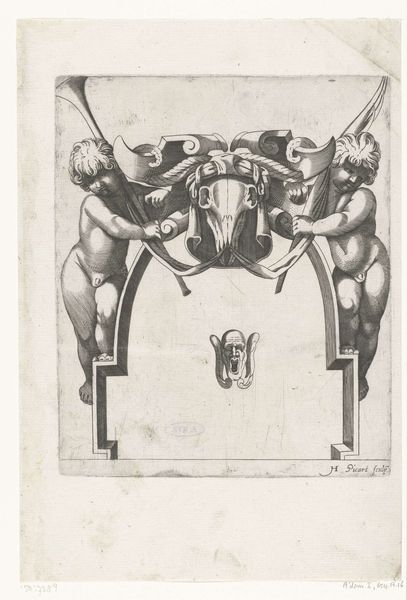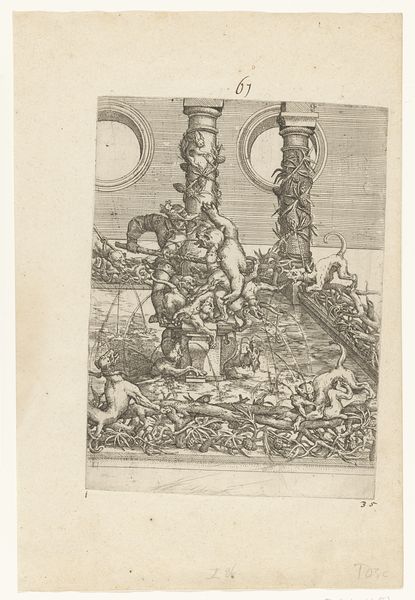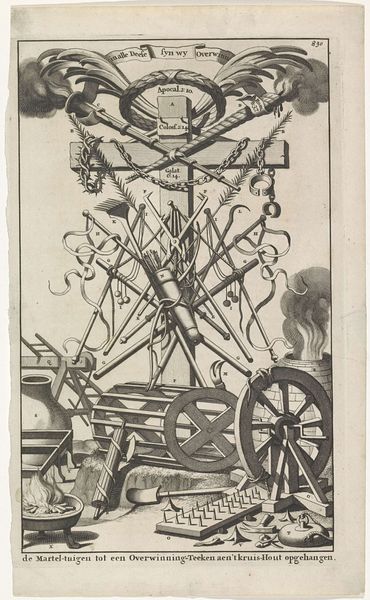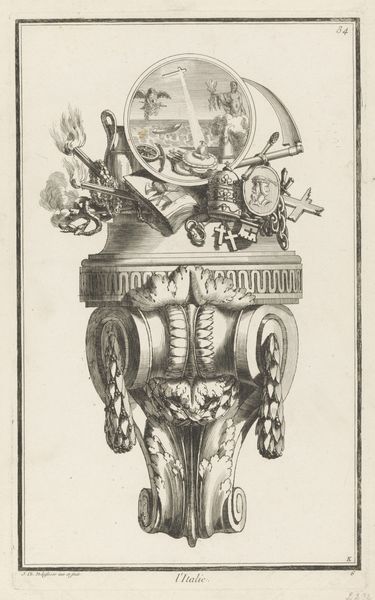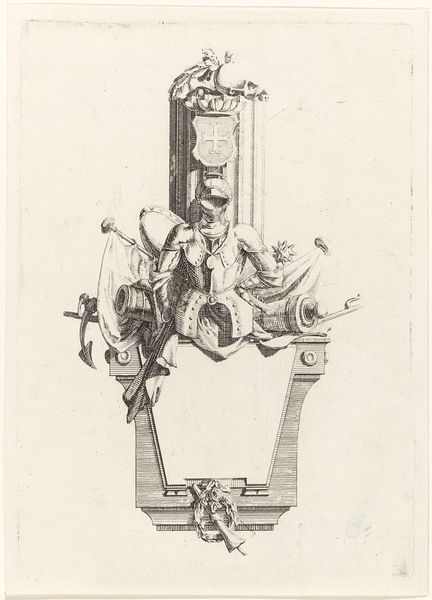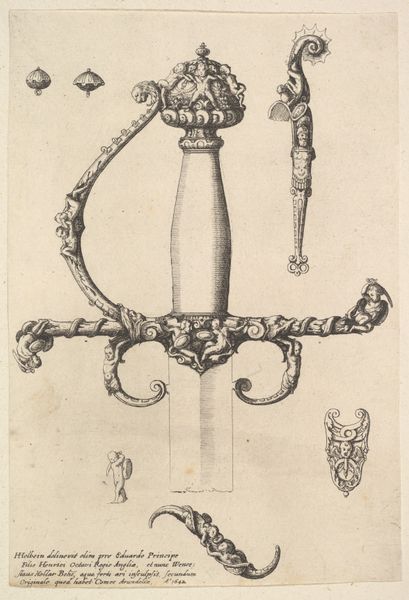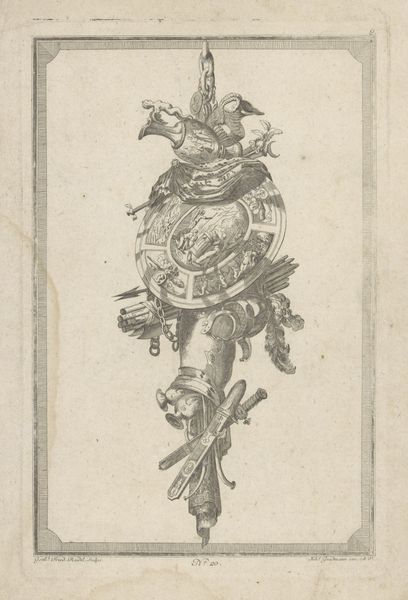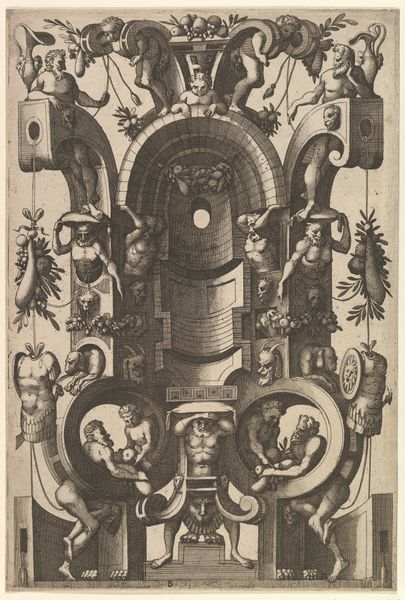
tempera, print, engraving
#
medieval
#
pen drawing
#
tempera
# print
#
form
#
line
#
decorative-art
#
engraving
Dimensions: sheet (trimmed within plate mark): 31.3 x 21.2 cm (12 5/16 x 8 3/8 in.)
Copyright: National Gallery of Art: CC0 1.0
Editor: This is Martin Schongauer's "A Censer," dating from around 1480 to 1490. It’s an engraving, so a print. It looks incredibly detailed, almost like a miniaturized gothic cathedral, but for incense! What can you tell me about this level of detail? Curator: Well, seeing such intricate decorative art from the late 15th century prompts questions about the role of imagery within religious practices. Censers were integral to Catholic rituals. Their visual complexity aimed to elevate the spiritual experience. Think about the cultural investment it represented; an ornate object broadcasting power. Editor: So the detail isn't just aesthetic; it's a statement? A visual sermon, maybe? Curator: Exactly. Consider the patronage. Who commissioned this? What social class did they belong to? The art market, even then, played a significant role in the spread of specific religious and social ideologies. These beautiful prints also made such imagery available to a broader audience beyond those physically attending Mass. Editor: It's like an early form of mass media! How did this specific censer design, gothic and intricate, influence later religious art, or even secular decorative art? Curator: It solidified the association between religious authority and complex ornamentation. The gothic style itself, embraced by the church, became a visual shorthand for established power. This aesthetic persisted through later artistic movements. What do you think a contemporary audience would make of such overt displays of wealth within a sacred space? Editor: Today, some might view that as excessive, given modern sensitivities about social inequality and church wealth. I find it really interesting how different social contexts shift our perceptions. Curator: Precisely! Examining the past reveals so much about the ever-changing role art plays in shaping and reflecting society's values. I have a much greater appreciation for the power of the object as it was originally viewed in the medieval setting.
Comments
No comments
Be the first to comment and join the conversation on the ultimate creative platform.
